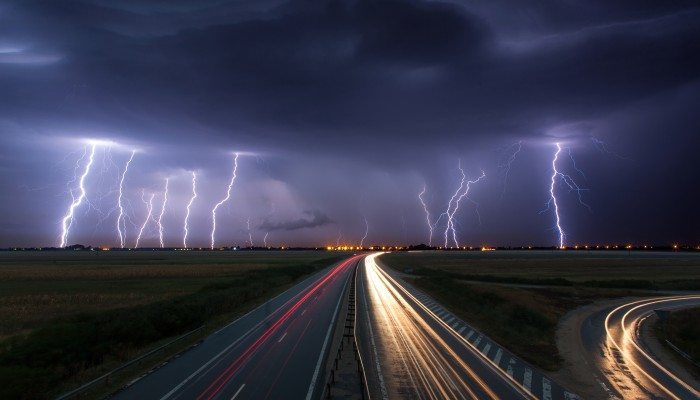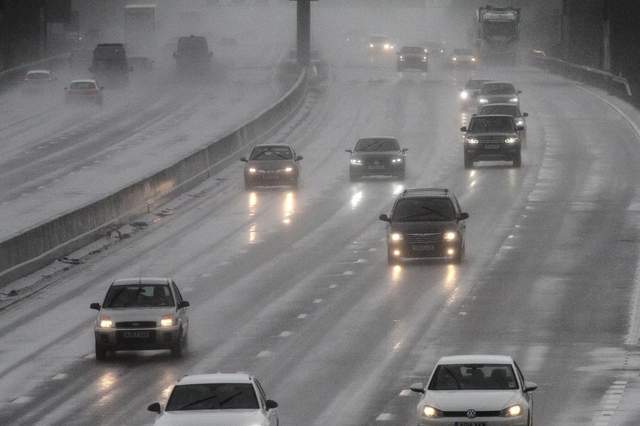Driving during thunderstorms here in the UK is not normally a threat for us here in the UK, but given the current extreme temperatures most of the UK have been experiencing the past couple of weeks it is a possibility we could now expect some thunderstorms or at least heavy downpours considering we have had such little rain during the summer months. July 22 is the second driest July since records began in 1836.
So what could be some tips to staying safe during storms and heavy rain?
- If you are caught our during a storm or need to drive during one be prepared to pull over if it becomes hazardous and wait for it to become safe to continue
- If you have to drive give yourself more time to get to your destination so you can drive slower and more carefully
- Always keep both hands on the wheel to ensure you remain in full control of the vehicle winds and rain can be persistent and can cause your car to drift or veer without warning
- Driving at a slower pace will make it easier to maintain a safe distance between yourself and the vehicle in front as you may lose full visibility
- Always reduce your speed slowly and avoid breaking harshly
- When breaking is essential keep it smooth and gentle
- Being aware and anticipating up and coming roads is key
Currently there is a yellow weather warning for some of this week
While some places stay dry, areas of heavy rain and thunderstorms will continue during Monday, bringing possible disruption.
What to expect
- There is a small chance that homes and businesses could be flooded quickly, with damage to some buildings from floodwater, lightning strikes, hail or strong winds
- Where flooding or lightning strikes occur, there is a chance of delays and some cancellations to train and bus services
- Spray and sudden flooding could lead to difficult driving conditions and some road closures
- There is a slight chance that power cuts could occur and other services to some homes and businesses could be lost
Before the thunderstorm
- Lightning can cause power surges, unplug any non-essential appliances if not already using a surge protector.
- Seek shelter if possible. When you hear thunder you are already within range of where the next ground flash may occur, lightning can strike as far as 10 miles away from the center of a storm.
During the thunderstorm
- Telephone lines can conduct electricity so try to avoid using the landline, unless in an emergency
- If outside avoid water and find a low-lying open place that is a safe distance from trees, poles or metal objects
- Avoid activities such as golf, rod fishing or boating on a lake
- Be aware of metal objects that can conduct or attract lightning, including golf clubs, golf buggies, fishing rods, umbrellas, motorbikes, bicycles, wheelchairs, mobility scooters, pushchairs, wire fencing and rails. If you are in a tent, try to stay away from the metal poles
- If you find yourself in an exposed location it may be advisable to squat close to the ground, with hands on knees and with head tucked between them. Try to touch as little of the ground with your body as possible, do not lie down on the ground
- If you feel your hair stand on end, drop to the above position immediately
After the thunderstorm
- Avoid downed power lines or broken cables
- If someone is struck by lightning, they often suffer severe burns. The strike also affects the heart, so check if they have a pulse.
Driving in a thunderstorm
If you are caught out in thunder and lightning it is advised that you wind up the windows and stay inside your car. This is because in the vast majority of cars with a metal roof and frame, the frame will act as a conductive Faraday cage, passing the current around the passengers inside and on to the ground.
- Soft-top convertibles, with their fabric roofs, are the most at risk and could catch fire if struck by lightning
- Be aware that current can travel through other parts of many modern cars, including GPS and radio systems. Cars with metal interior handles, foot pedals and steering wheels can also carry current
- Cars can be damaged both internally and externally by lightning strikes
Thunderstorms can also bring a risk of sudden gusty winds, those most at risk would include cyclists, motorcyclists and high sided vehicles.
- Remember to give vulnerable road users including cyclists, motorcyclists and pedestrians more room than usual. They are more likely to be blown around by side winds – always keep a safe distance.
- Keep your speed down, lowering your speed will lower the distance you travel when buffeted around by the wind.
Hail storms can be extremely dangerous to drive in reducing your ability to see and be seen, as well as causing damage to your vehicle. If hail is severe, stop and pull over to a safe place and remain inside the vehicle
From all of us here at Britannia drive safe and cautiously.
 Buy Gifts Vouchers Here
Buy Gifts Vouchers Here Intensive Driving Courses
Intensive Driving Courses Driving Test Booking Services
Driving Test Booking Services




